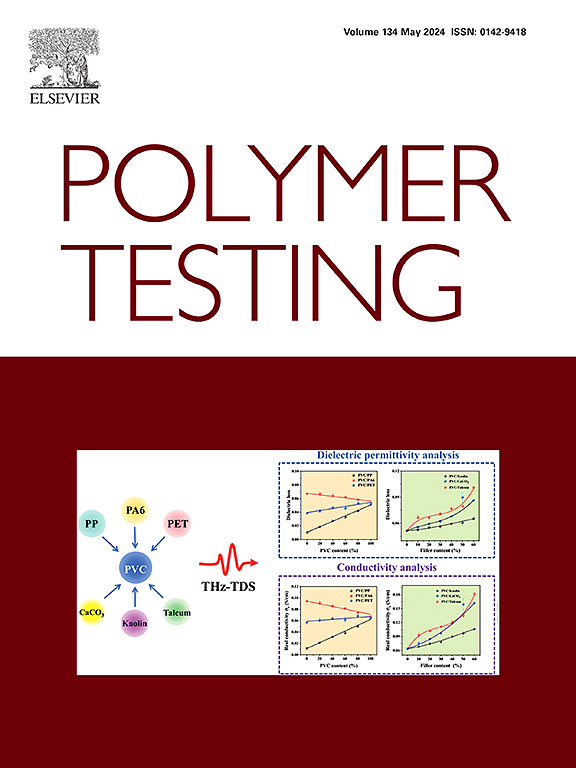Injectable double network hydrogel with adjustable stiffness for modulation of macrophage polarization
IF 5
2区 材料科学
Q1 MATERIALS SCIENCE, CHARACTERIZATION & TESTING
引用次数: 0
Abstract
Substrate stiffness can regulate macrophage polarization to support tissue repair in tissue engineering applications. Understanding the mechanisms of stiffness sensing is valuable for applying this knowledge to stiffness-related inflammatory diseases. In this study, we examined IACs-related integrins related to stiffness-sensitive macrophage polarization by constructing an injectable double-network (DN) hydrogel with varying stiffness. Inflammatory cytokine expression decreased as substrate stiffness increased (from 19.9 to 125.7 kPa), with medium stiffness (84.8 kPa) inducing macrophages to an increased level of anti-inflammatory polarization. Improved adhesion and elevated expression levels of ITGA5, ITGA3, and ITGAV in macrophages on the softer hydrogels highlighted the role of integrins in stiffness-regulated macrophage polarization. Inhibition of integrins using ethylenediaminetetraacetic acid (EDTA) abolished differences in macrophage polarization across the three groups, further confirming the central role of integrins. These findings suggest that, in tissue engineering, selecting appropriate substrate stiffness or gradient stiffness hydrogel could align with the optimal mechanical environment required for specific cell growth and function. Additionally, the critical role of integrins in mediating mechanical transduction may provide new therapeutic targets for treating certain stiffness-related inflammatory diseases.

求助全文
约1分钟内获得全文
求助全文
来源期刊

Polymer Testing
工程技术-材料科学:表征与测试
CiteScore
10.70
自引率
5.90%
发文量
328
审稿时长
44 days
期刊介绍:
Polymer Testing focuses on the testing, analysis and characterization of polymer materials, including both synthetic and natural or biobased polymers. Novel testing methods and the testing of novel polymeric materials in bulk, solution and dispersion is covered. In addition, we welcome the submission of the testing of polymeric materials for a wide range of applications and industrial products as well as nanoscale characterization.
The scope includes but is not limited to the following main topics:
Novel testing methods and Chemical analysis
• mechanical, thermal, electrical, chemical, imaging, spectroscopy, scattering and rheology
Physical properties and behaviour of novel polymer systems
• nanoscale properties, morphology, transport properties
Degradation and recycling of polymeric materials when combined with novel testing or characterization methods
• degradation, biodegradation, ageing and fire retardancy
Modelling and Simulation work will be only considered when it is linked to new or previously published experimental results.
 求助内容:
求助内容: 应助结果提醒方式:
应助结果提醒方式:


